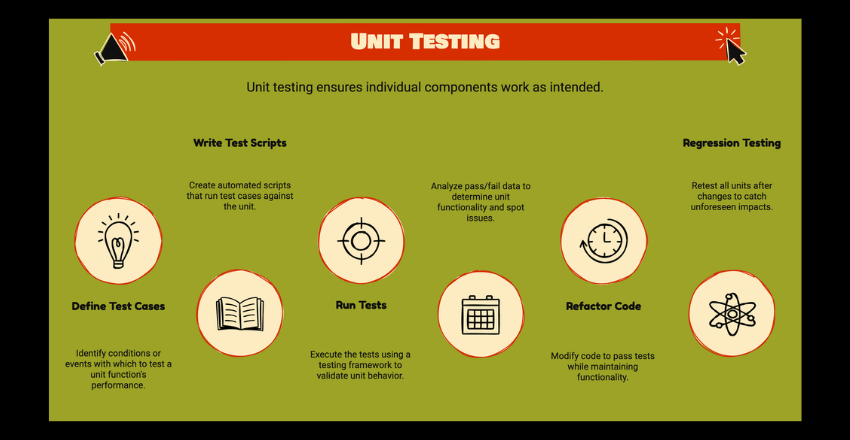Does your organization believe that DevOps transformation is simply about automating everything? This common misconception can lead to disastrous outcomes. DevOps is far more than just a set of automation tools; it’s a holistic approach that encompasses cultural change, collaboration, and continuous learning.
Understanding Devops Automation
The belief that “DevOps means automating everything” is pervasive. While automation is indeed a critical component, it’s not the whole picture. Picture this: you’re in a car race, and you’ve got the fastest car thanks to cutting-edge automation. However, without skilled drivers, teamwork, and strategic planning, that speed advantage is meaningless. The same applies to DevOps. Automation without cultural transformation and continuous improvement is like that race car with no one to steer it effectively.
The Broader Scope of DevOps
DevOps is about breaking down silos and fostering a culture of collaboration between development and operations teams. It’s about shared responsibility and aligning everyone towards common goals. Automation plays a part, but the true power of DevOps lies in the synergy between technology, processes, and people.
Cultural Change: The Heart of DevOps
Cultural change is the cornerstone of a successful DevOps transformation. It involves shifting mindsets from isolated work to collaborative efforts. Here’s a scenario: A developer encounters a bug and fixes it. Traditionally, they might toss the fix over to operations with little further involvement. In a DevOps culture, the developer collaborates closely with operations to ensure the fix integrates smoothly into production. This shared responsibility leads to better outcomes.
Continuous Learning and Improvement

In the dynamic world of software development, continuous learning is vital. DevOps encourages a culture of experimentation and feedback. Imagine your team as a group of explorers constantly discovering new territories. They learn from each expedition, adapt their strategies, and improve their tools. This iterative process is the essence of DevOps, ensuring that your organization remains agile and responsive to changes.
Example: Successful DevOps Transformation
Consider the journey of TechCorp, a mid-sized software company specializing in cloud-based solutions. Initially, TechCorp’s development and operations teams worked in silos, leading to inefficiencies and frequent deployment failures. Realizing the need for a transformation, they embarked on a DevOps journey that went beyond mere automation.
Initial Steps: Automation and Quick Wins
TechCorp began by automating their build and deployment processes using Jenkins. This immediate step provided quick wins and showcased the benefits of automation. For example, before automation, building and deploying new features took several hours, involved manual steps, and was prone to human error. By introducing a Jenkins pipeline, they significantly reduced the build time and minimized errors.
Here’s an example of the Jenkins pipeline script they used:
pipeline {
agent any
stages {
stage('Build') {
steps {
script {
if (env.BRANCH_NAME == 'master') {
sh 'mvn clean install -P production'
} else {
sh 'mvn clean install'
}
}
}
}
stage('Test') {
steps {
sh 'mvn test'
}
}
stage('Deploy') {
steps {
script {
if (env.BRANCH_NAME == 'master') {
sh 'mvn deploy -P production'
} else {
echo 'Skipping deployment for non-master branch'
}
}
}
}
}
post {
always {
junit '**/target/surefire-reports/*.xml'
archiveArtifacts artifacts: '**/target/*.jar', fingerprint: true
}
}
}This script helped automate the build, test, and deploy stages based on the branch, ensuring that production builds were handled with additional care.
Realizing the Need for Cultural Change
Despite the initial success with automation, TechCorp soon realized that technical solutions alone were insufficient. They still faced challenges such as delayed feedback, resistance to change, and a lack of ownership. This prompted them to focus on cultural transformation.
Fostering a Collaborative Culture
TechCorp started fostering a culture of collaboration. They initiated “DevOps Days” where developers and operations engineers worked together on shared projects. These sessions included joint problem-solving activities and workshops on best practices.
For example, during a DevOps Day, the team addressed a recurring issue where deployments caused performance degradation. By working together, they identified that database migrations were the culprit. They then collaborated to create a database migration strategy that included thorough testing in a staging environment before production deployment.
Investing in Training and Continuous Learning

Understanding that skills development was crucial, TechCorp invested in comprehensive training programs. They offered courses on advanced CI/CD practices, cloud infrastructure management, and agile methodologies. Additionally, they promoted a culture of continuous learning by encouraging attendance at industry conferences and organizing internal knowledge-sharing sessions.
One notable initiative was the creation of “Tech Talks,” weekly sessions where team members presented on various topics, from new tools and technologies to lessons learned from recent projects. This not only enhanced individual skills but also fostered a sense of community and shared knowledge.
Open Communication and Blameless Post-Mortems
To improve communication, TechCorp implemented regular stand-ups and cross-team meetings. They also adopted the practice of blameless post-mortems for incidents. Instead of pointing fingers, these sessions focused on understanding what went wrong and how to prevent similar issues in the future.
For example, after a major outage caused by a faulty deployment script, the post-mortem revealed gaps in the testing process. The team collaboratively devised a more robust testing strategy, including automated rollback mechanisms to quickly revert to the last known good state if an issue was detected.
Here’s a snippet of their improved deployment script with rollback functionality:
pipeline {
agent any
stages {
stage('Build') {
steps {
sh 'mvn clean install'
}
}
stage('Test') {
steps {
sh 'mvn test'
}
}
stage('Deploy') {
steps {
script {
try {
sh 'mvn deploy'
} catch (Exception e) {
echo 'Deployment failed, initiating rollback...'
sh 'mvn deploy:rollback'
error 'Deployment and rollback process completed.'
}
}
}
}
}
post {
always {
junit '**/target/surefire-reports/*.xml'
archiveArtifacts artifacts: '**/target/*.jar', fingerprint: true
}
}
}Results
Through these comprehensive changes, TechCorp achieved results. Their deployment frequency increased from monthly to several times a day. They also saw a significant reduction in production issues, thanks to improved testing and better collaboration.
Metrics painted a clear picture of their success:
- Deployment Frequency: Increased from once a month to multiple times per day.
- Lead Time for Changes: Reduced from days to hours.
- Mean Time to Recovery (MTTR): Decreased from several hours to under 30 minutes.
- Change Failure Rate: Dropped from 30% to under 5%.
These improvements not only enhanced their operational efficiency but also boosted team morale and fostered a culture of innovation.
TechCorp’s journey highlights the importance of viewing DevOps as a holistic transformation encompassing automation, cultural change, and continuous learning. By moving beyond the narrow focus on automation and embracing these broader principles, your organization can achieve similar remarkable results.
Practical Steps to DevOps Transformation

Assess Your Current State
Begin by taking a comprehensive look at your organization’s current processes, tools, and culture. This initial assessment will serve as your baseline and guide your transformation journey. Start by mapping out your entire software delivery pipeline. Identify the key stages, from development to deployment, and scrutinize each for inefficiencies and bottlenecks.
For instance, let’s consider an organization where deployments often fail or cause downtime. An assessment might reveal that the root cause is not a lack of automation but poor communication between the development and operations teams. Perhaps the development team is unaware of the operational constraints or the operations team is not informed about upcoming changes until it’s too late. Understanding these dynamics is crucial for a successful transformation.
Foster a Collaborative Culture
Encouraging a culture of collaboration is essential in DevOps. This involves breaking down the silos between teams and fostering an environment where cross-functional teams work together towards shared goals. One effective way to do this is by implementing regular “blameless” post-mortems. When something goes wrong, the focus should be on understanding what happened and how to prevent it in the future, rather than assigning blame.
Imagine a scenario where a critical application goes down. Instead of pointing fingers, the development and operations teams come together to analyze the issue. They discover that a lack of integration testing led to the failure. By working together, they establish a new protocol for integration testing, ensuring that future deployments are more robust.
Invest in Training
DevOps is a continuously evolving field, and keeping your team updated with the latest skills and knowledge is vital. Invest in training programs that cover both the technical and cultural aspects of DevOps. Encourage your team to attend workshops, conferences, and online courses. Promote a growth mindset where continuous learning is part of the job.
For example, consider a team that regularly encounters issues with their CI/CD pipeline. By enrolling in advanced courses on Jenkins or GitLab CI, they can learn best practices and new techniques.

Additionally, fostering a culture where team members share their learnings through internal tech talks or brown bag sessions can significantly elevate the collective knowledge of the team.
Implement Automation Strategically
Automation is a powerful tool in the DevOps arsenal, but it should be used strategically. Identify repetitive and error-prone tasks that can benefit from automation. However, don’t fall into the trap of automating for automation’s sake. Each automated process should add value and align with your overall DevOps strategy.
Consider the example of automated testing. While it’s tempting to automate every test, it’s more effective to prioritize tests that are run frequently and have the highest impact on the deployment pipeline. Use tools like Selenium for end-to-end testing and JUnit for unit tests.
Additionally, implement continuous integration tools like Jenkins or CircleCI to automatically run these tests every time code is committed.

Here’s a simple example of a Jenkins pipeline script that automates the build, test, and deployment process:
pipeline {
agent any
stages {
stage('Build') {
steps {
sh 'mvn clean install'
}
}
stage('Test') {
steps {
sh 'mvn test'
}
}
stage('Deploy') {
steps {
sh 'mvn deploy'
}
}
}
post {
always {
junit '**/target/surefire-reports/*.xml'
archiveArtifacts artifacts: '**/target/*.jar', fingerprint: true
}
}
}This script automates the process of building, testing, and deploying a Maven project, ensuring that each step is consistently and reliably executed.
Measure and Iterate
Finally, establish metrics to track your progress and gather feedback. Use this data to refine your processes continuously. Key metrics might include deployment frequency, lead time for changes, mean time to recovery (MTTR), and change failure rate. Regularly review these metrics to identify areas for improvement.
For example, suppose your team notices that the lead time for changes is increasing. Upon investigation, you find that code reviews are taking longer than expected due to a lack of clear guidelines. By implementing a standardized code review checklist and providing training on effective code reviews, you can streamline the process and reduce lead time.
Wrapping up
DevOps transformation is not just about automating everything. It’s a holistic approach that involves cultural change, collaboration, and continuous learning.
Source Links
https://www.knowledgehut.com/blog/devops/devops-transformation
https://rtslabs.com/devops-transformation-assessing-readiness-and-setting-smart-goals-for-success/
https://itsvit.com/blog/the-ultimate-devops-transformation-roadmap-a-step-by-step-guide/















